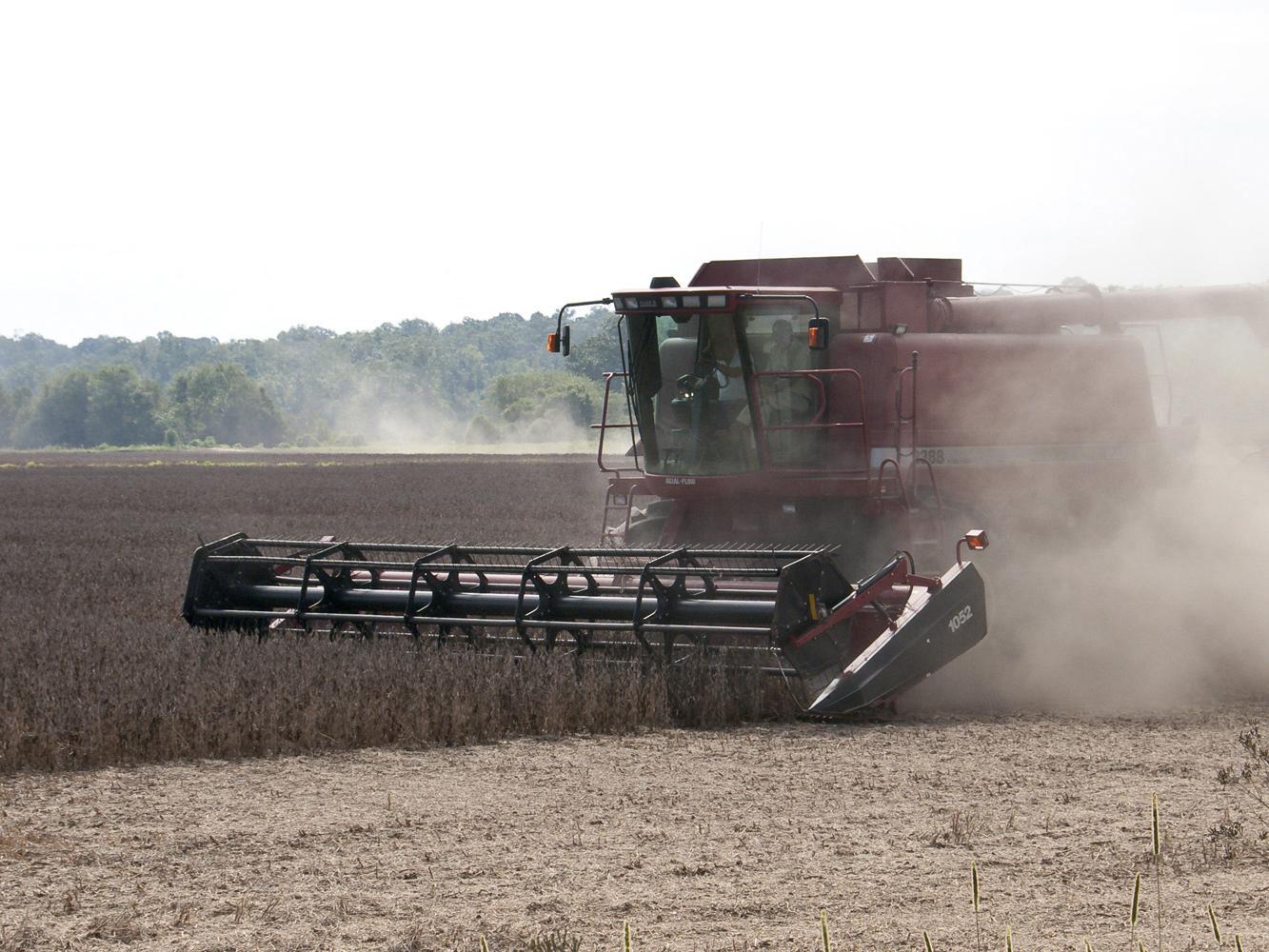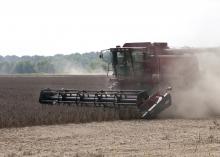Information Possibly Outdated
The information presented on this page was originally released on September 16, 2011. It may not be outdated, but please search our site for more current information. If you plan to quote or reference this information in a publication, please check with the Extension specialist or author before proceeding.
Good soybean prices await average yields
MISSISSIPPI STATE – Tropical Storm Lee brought rain across the state Labor Day weekend with mixed results -- mostly good -- for the state’s soybean crop.
Rain that weekend ranged from a few hundredths of an inch in northwest Mississippi to as many as 10 inches in some soybean-growing areas. Whether it brought much-needed moisture to dry fields at an ideal time or halted harvest depended on when the crop was planted.
“Tropical Storm Lee brought rain but very little wind, so it did not have a detrimental effect on the crop in most areas,” said Tom Eubank, a soybean weed scientist and agronomist at Mississippi State University’s Delta Research and Extension Center in Stoneville.
The U.S. Department of Agriculture reported just 18 percent of the crop harvested by Sept. 11, which is well behind schedule. In a typical year, about half the crop is harvested by mid-September.
Heavy rains and flooding in the Delta delayed soybean planting until August in some areas. Other acres were planted late following the June harvest of winter wheat. Good soybean prices encouraged many producers to risk these late plantings.
Jimmy Sneed, a soybean producer in the hills of DeSoto County, planted a few hundred acres of soybeans in mid-July. River flooding made it late, but $14-a-bushel prices made it attractive. His crop is grown without irrigation.
“Historically, if we don’t have an early frost, we can make 20 to 25 bushels an acre, minimum,” Sneed said. “We felt like the market price made it a decent gamble.”
Eubank said most early-planted soybeans, or those in the ground by mid-April, were harvested before Labor Day.
“The tropical storm brought welcome rainfall to soybean fields that had been planted in late April to early May and needed one more irrigation or rainfall to finish out the crop,” Eubank said.
“On the really late, dry land fields that were planted in June and July, that rain was positive for them because it has been very hot and dry,” Eubank said. “For soybeans, this tropical storm came through the state with almost ideal timing.”
Overall, Eubank expects yields to be average at best on irrigated acres and below average on dry land fields.
“Last year was a good year, with the state average soybean yield at nearly 37 bushels an acre,” Eubank said. “However, with the high heat and drought conditions this year, we are seeing slightly lower yields and test weights as compared to 2010.”
While much of the state’s soybean crop is ready for harvest, about 20 percent will remain in the field until late October. Insect pressure will build as nearby fields are harvested and pests move into remaining fields. Growers will also have to monitor for drought stress. Heat and drought kept disease mostly away, and no instances of soybean rust have been detected in the state as of mid-September.
“We hope to have the bulk of the crop harvested by early October,” Eubank said.
John Michael Riley, Extension agricultural economist, said current soybean prices are $13.80 a bushel. This is not a record, but it is high.
“For most of the growing season, the price for soybeans has been rising along with the price for other grains and oil seeds,” Riley said. “This reflects a tight supply situation. There are not a lot of beans in the bins.”
Soybean prices were lower in 2009 and 2010. Contributing to the limited supply this year is the fact that corn got a lot of acres that might have been planted in soybeans, and delayed planting and hot temperatures are expected to limit soybean yield potential.













